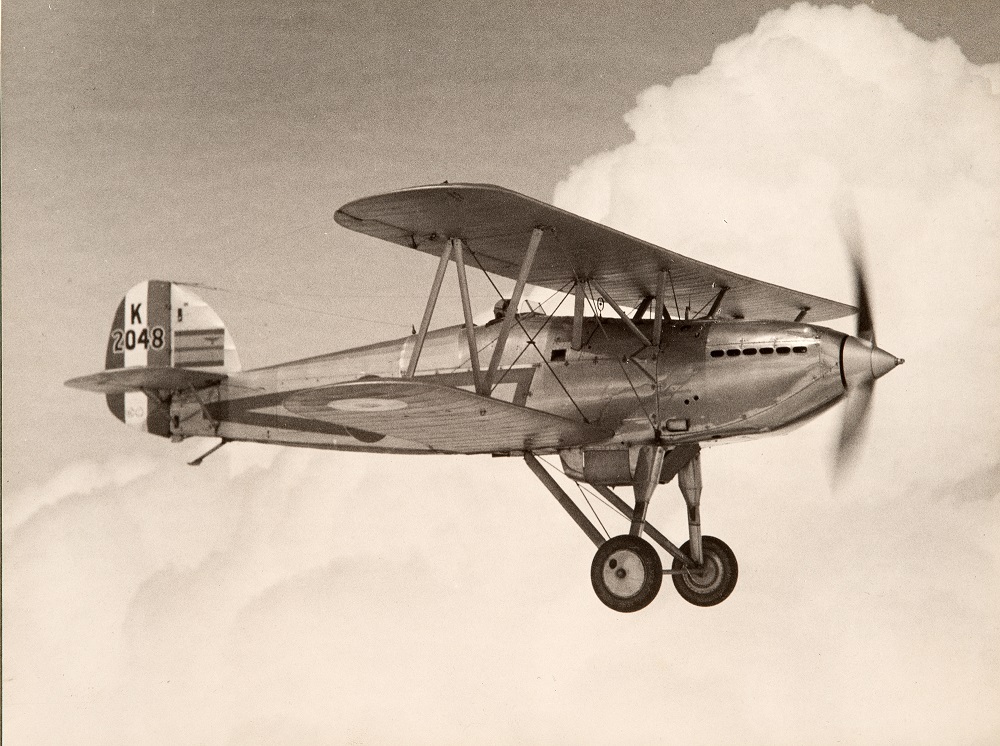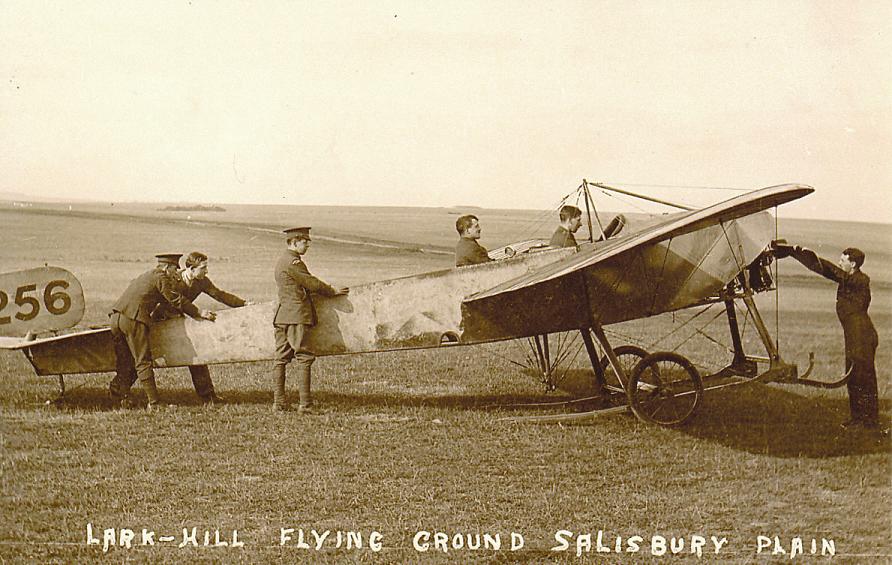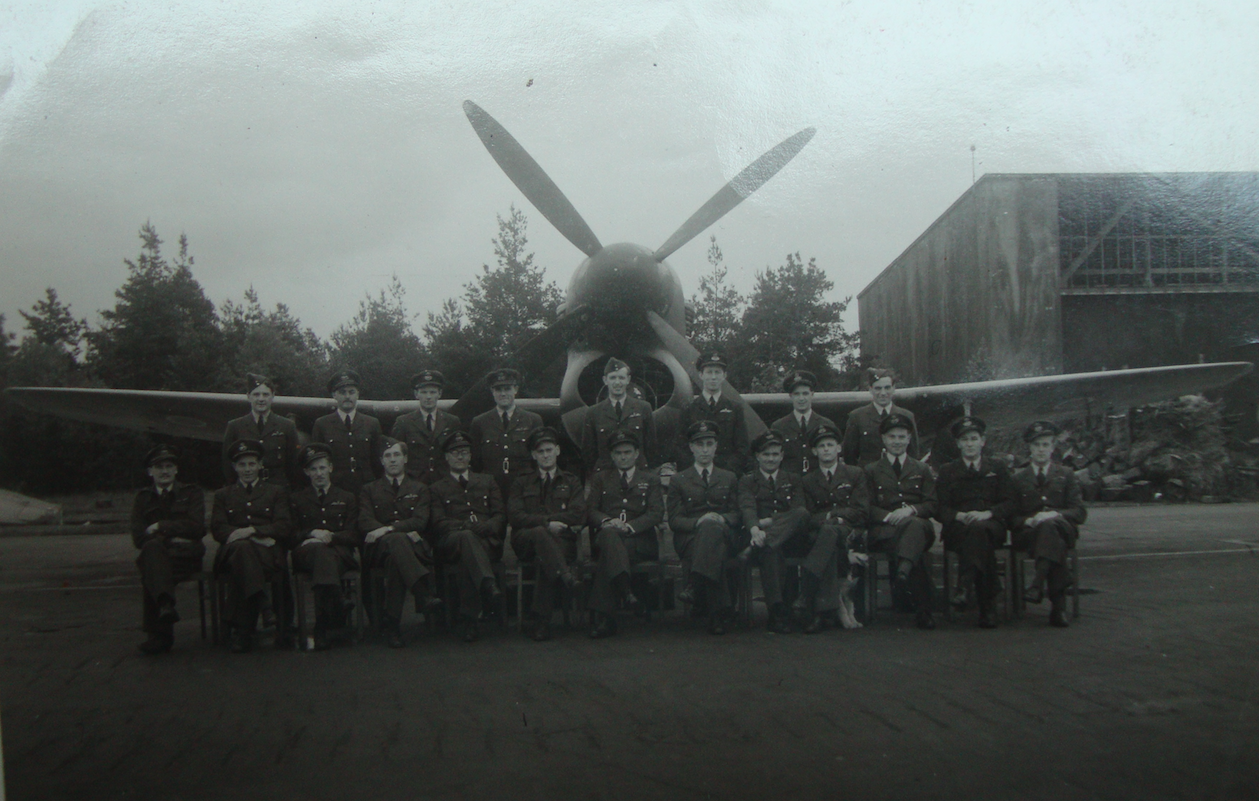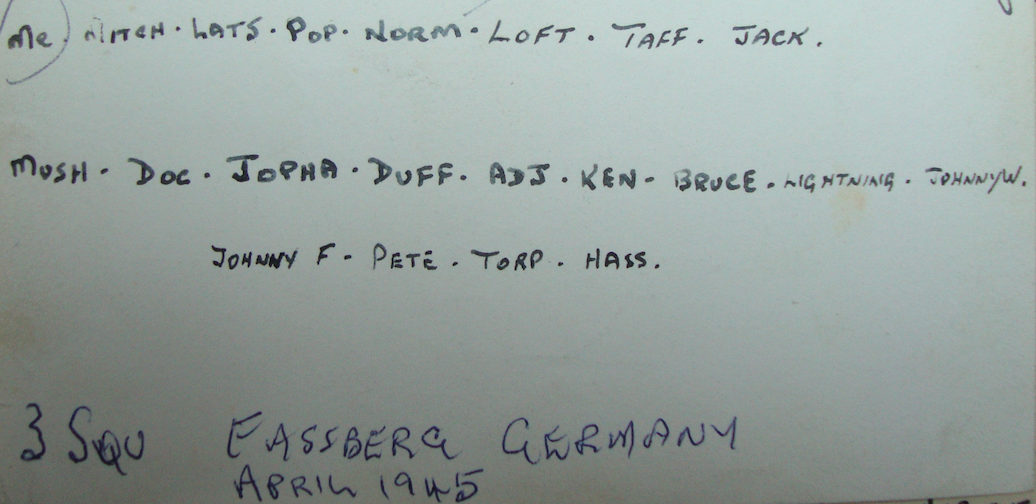Air of Authority - A History of RAF Organisation
 Formed
from No 1 Airship Company of the Air Battalion on 13 May 1912. Became part
of the Naval Wing when responsibility for airships was handed over to the
them on 1 January 1914, but on 1 May 1914, it was renamed the Airship Detachment
RFC and a new No 1 Squadron was formed.
Formed
from No 1 Airship Company of the Air Battalion on 13 May 1912. Became part
of the Naval Wing when responsibility for airships was handed over to the
them on 1 January 1914, but on 1 May 1914, it was renamed the Airship Detachment
RFC and a new No 1 Squadron was formed.
It's aircraft were allocated to the other four squadrons which, moved to France in August 1914, with No 1 eventually following in early 1915. Originally equipped as a reconnaissance squadron, it gradually started using fighters, becoming a pure fighter unit in January 1917. It remained in France until March 1919 when it returned to the UK, being disbanded on 20 January 1920
Reformed in India, 21 January 1921, it moved to Iraq in May 1921, being disbanded again on 1 November 1926. Its next incarnation was at Tangmere from 1 February 1927 at a fighter squadron, where it remained until moving to France as part of the AASF, in 1939. During this period, the squadron claimed over 100 aircraft destroyed for the loss of 17 Hurricanes and two pilots. Returning to the UK the squadron fought in the Battle of Britain, carried out fighter sweeps over France and intruder operations over enemy airfields in France.
In 1942, the squadron re-equipped with Typhoons and Spitfire IXs in 1944 and operated in the fighter bomber role until the V1 campaign opened and it reverted back to the fighter role. After this it took on the bomber escort role, re-equipping with the Spitfire FXXI in 1945. The squadron entered the jet age in 1946 when it re-equipped with Meteors.
However, in 1947 the squadron adopted the role of Instrument Flying Training Unit for No 11 Group. It carried out this task for less than a year before becoming a Meteor unit again. Converting to Hunters in October 1955, the squadron disbanded on 23 Jun 1958. However, on 1 July 1958 the squadron was reformed by re-numbering No 263 Squadron at Stradishall. As a ground attack unit, No 1 was transferred to No 38 Group, Transport Command on 1 Jan 1960.
The squadron made history in July 1969, when it became the world's first operational unit to fly V/STOL aircraft when it introduced the Harrier to service. The squadron remained at Wittering flying the Harrier GR1, GR3, GR5 (from 1988) and now the GR7 (from 1992). In 2000, the squadron became part of the joint RAF/RN 'Joint Force Harrier', within No 3 Group, moving to its current base at Cottesmore in 2001. In the Strategic Defence and Security Review of October 2010 it was announced that the Harrier force would be withdrawn from service early and consequently 16 aircraft from Nos 1, IV and 800 Squadrons made a final formation flight on 15 December 2010 and No 1 Squadron formally disbanded on 28 January 2011. However the squadron was re-formed on 15 September 2012 at RAF Leuchars, equipped with the Typhoon FGA Mk 4 but in 2014 with the closure of RAF Leuchars it re-located to RAF Lossiemouth.
| Standards | Battle Honours* |
| Award of Standard originally announced on 7 Sep 1943,
effective from 1 Apr 1943 but
presented:- lst - 24 April 1953 2nd - 27 June 1983 |
Western Front,
1915-1918: Ypres, 1915: Neuve Chappelle: Loos: Somme, 1916:
Arras: Ypres, 1917 Lys: Amiens: Somme, 1918: Hindenburg Line: Independent Force & Germany,
1918: France & Low Countries, 1939-1940: Battle of Britain,
1940: Channel & North Sea, 1941-1945: Home Defence, 1940-1945:
Fortress Europe, 1941-44:
Arnhem: Normandy, 1944: France & Germany, 1944-1945: Biscay, 1944-1945: Rhine: South
Atlantic, 1982: Iraq 2003:
Kurdistan, 1922-1925 Iraq, 1923-1925 |
Squadron Codes used: -
| NA | Nov 1938 - Sep 1939 |
| JX | Sep 1939, Jun 1940 - Apr 1951 |
| 01 - 14 | Used on Harriers |
 |
| Nieuport Nighthawk of No 1 Squadron, probably taken
at RAF Hinaidi This photo is from the collection of Air Commodore (then a Plt Off/Fg Off) D W F Bonham-Carter CB, DFC courtesy of his grandson, Jim Cownie |
 |
|
Hawker Fury of No 1 Squadron Photo from the collection of David Lloyd, courtesy of his son Sampson |
[Aircraft & Markings | Personnel, aircraft and locations | Commanding Officers]
e-mail: - No 1 Squadron Association
No II (Army Co-operation) Squadron
 Formed
on 13 May 1912 as one of the original squadrons of the RFC, it was originally
based at Farnborough but soon moved north to Montrose in Scotland. When
war broke out in 1914, the squadron moved south again and joined the rest of the
BEF in France.
Formed
on 13 May 1912 as one of the original squadrons of the RFC, it was originally
based at Farnborough but soon moved north to Montrose in Scotland. When
war broke out in 1914, the squadron moved south again and joined the rest of the
BEF in France.
No II soon settled into the routine of a Corps reconnaissance squadron initially with BE2's and later FK8's. Returning to the UK in February 1919, it disbanded on 20 January 1920. It reformed a few days later on 1 February 1920 in Ireland equipped with Bristol Fighters. Returning to England in 1922, it was back in Ulster by May 1922 and maintained a detachment there until 1923 even after the squadron HQ had moved to Farnborough late in 1922.
It stayed at Farnborough until March 1924, when it moved to RAF Manston. In April 1927 it was sent to Shanghai as part of RAF China, but returned to the UK, again at Manston in September 1927. Specialising in Army Co-operation, it successively converted to the Atlas and then the Lysander, which it took to France again in 1939 as part of the Air Component of the BEF.
The squadron retained Lysanders until April 1942, but also used the Tomahawk for tactical reconnaissance, both types being replaced by Mustangs. Having carried out missions in preparation for, during and after D-Day, in support of 21 Army Group, the squadron began to re-equip with Spitfires in November 1944.
Remaining in Germany after the war as part of BAFO, its Spitfires were replaced by Meteors in 1950. Swifts replaced the Meteors in 1956 and these in their turn were replaced by Hunters in 1961. It moved around Germany and at various times was based at Sylt, Celle, Wunsdorf, Lubeck, Wahn, Buckeburg, Gutersloh, Geilenkirchen, Jever before returning to Gutersloh. In December 1970 a new No II Squadron began working up on the Phantom at Bruggen whilst the old No II Squadron continued to operate at Gutersloh. The Phantom unit officially took over the numberplate on 1 April 1971 and moved to Laarbruch. Converting to Jaguars in 1976, the squadron remained in Germany until 1991 when it returned to the UK for the first time since 1944 and is now based at Marham equipped with the GR1A/GR4A, dedicated reconnaissance version of the Tornado. II Squadron disbanded in January 2015 but immediately reformed the next day as a Typhoon squadron at RAF Lossiemouth, it's Tornadoes being reformed into a new No 12 Squadron.
| Standards | Battle Honours* |
| Award of Standard originally announced on 7 Sep 1943,
effective from 1 Apr 1943 but
presented:- 1st - 31 October 1953 2nd - 30 May 1984 |
Western Front, 1914-1918:
Mons: Neuve Chappelle:
Ypres, 1915:
Loos: Somme, 1916:
Arras: Somme, 1918: Lys: France & Low Countries, 1939-1940:
Dunkirk:
Fortress Europe, 1942-1944: France & Germany, 1944-1945:
Normandy,
1944: Arnhem:
Walcheren:
Rhine: Gulf, 1991:
Iraq 2003:
Libya 2011: Iraq 2003-2011: |
Squadron Codes used: -
| KO | Nov 1938 - May 1941 |
| XV | May 1941 - 1943 |
| OI | Sep 1946 - Apr 1951 |
| B | Apr 1951 - 1955 |
| On its Hunters the codes used spelt out "SHINYTWO" | |
| On the Phantoms the codes used spelt out "SHINYERTWO" | |
| A - Z | Used on Tornados |
[Aircraft & Markings | Personnel, aircraft and locations | Commanding Officers]
 Formed
from No.2 (Aeroplane) Company of the Air Battalion on 13 May 1912 at Larkhill, it moved to France in support
of the BEF in August 1914. Operating as a Corps reconnaissance squadron
with Morane Parasols from 1916, the squadron re-equipped with Camels in
September 1917, becoming a fighter unit. Returning to the UK in February 1919, the squadron disbanded on
27 October 1919. Reforming in India on 1 April 1920 it operated as a
fighter unit with Snipes until 30 September 1921.
Formed
from No.2 (Aeroplane) Company of the Air Battalion on 13 May 1912 at Larkhill, it moved to France in support
of the BEF in August 1914. Operating as a Corps reconnaissance squadron
with Morane Parasols from 1916, the squadron re-equipped with Camels in
September 1917, becoming a fighter unit. Returning to the UK in February 1919, the squadron disbanded on
27 October 1919. Reforming in India on 1 April 1920 it operated as a
fighter unit with Snipes until 30 September 1921.
A change of role followed, when the next day the mobile flight of No 205 Squadron at Leuchars was re-numbered No 3. Initially equipped with DH9As it later used the Westland Walrus for fleet co-operation work before disbanding into No's 421 and 422 Flights on 1 Apr 1923.
Exactly a year later, it reformed with Snipes at Manston, but soon moved to Upavon. Successively equipped with Woodcocks, Gamecocks and Bulldogs it remained at Upavon until October1935 when it was deployed to the Sudan as a result of the Abyssinian crisis. Returning to UK in August 1936 it moved to Kenley where it converted to Hurricanes in 1938, but Kenley was too small for these aircraft, so it reverted to biplanes in the form of Gladiators. A move to Biggin Hill brought back the Hurricanes in 1939 and the squadron remained there on the outbreak of war.
However, setbacks in France soon led the No 3 to be sent to France as reinforcements for the Air Component of the BEF. Evacuated back to Britain it moved to Scotland to 'recuperate', remaining there to defend Scapa Flow until April 1941. It then became a night fighter/intruder unit until February 1943 when the first Typhoons arrived. It continued fighter bomber operations over Northern France until March 1944 when it received the Hawker Tempest, just in time to take part in anti V1 (Diver) operations.
In September 1944 the squadron joined 2TAF and supported the Army all the way to Germany where it remaining after the war as part of BAFO. Conversion to Vampires followed in April 1948, Sabres in May 1953 and Hunters in May 1956. However, the squadron disbanded on 15 June 1957 at Geilenkirchen to where it had moved on 21 July 1953 from Wildenrath. Less than two years later on 21 January 1959, it was reformed by re-numbering No 96 Squadron, again in RAF Germany but this time at Geilenkirchen operating Javelins until 31 December 1960 when it was again disbanded. The next day No 59 Squadron, also at Geilenkirchen, was re-numbered and No 3 became a Canberra intruder unit until re-equipping with the Harrier GR1 in 1972.
With the Harrier, the unit moved to Wildenrath, Gutersloh and finally Laarbruch, from November 1992, having re-equipped with the GR5 version in March 1989. With the closure of Laarbruch the unit, now equipped with the Harrier GR7 (from November 1990), returned to the UK and joined the RAF/RN 'Joint Force Harrier' as part of No 3 Group based at RAF Cottesmore. On 31 March 2006, the squadron became the first operational unit to operate the Typhoon F Mk 2, when it moved to RAF Coningsby.
| Standards | Battle Honours* |
| Award of Standard originally announced on 7 Sep 1943,
effective from 1 Apr 1943 but
presented:- lst - 11 December 1953 ACM Sir Philip Joubert de la Ferte 2nd - 3 June 1983 AM Sir Patrick Hine. |
Western Front, 1914-1918: Mons: Neuve Chappelle: Loos: Somme, 1916: Cambrai, 1917: Somme, 1918: Hindenburg Line: France & Low Countries, 1940: Battle of Britain, 1940: Home Defence, 1940-1945: Dieppe: Fortress Europe, 1942-1944: Channel & North Sea, 1941-1945: Normandy, 1944: Arnhem: Rhine: France & Germany, 1944-1945: Iraq 2003: Libya 2011: |
Squadron Codes used: -
| OP | Nov 1938 - Sep 1939 |
| QO | Sep 1939 - May 1944 |
| JF | May 1944 - 1946 |
| J5 | 1946 - Apr 1951 |
| A | Apr 1951 - May 1953 |
| AA - AZ | Aug 1986 - Current |
 |
| Bristol-Prier Monoplane No 256 serving with No 3 Sqn in 1912-13 |
Original No 3 Squadron Badge (courtesy of Julian Halden-Goddard), click to enlarge.
 |
 |
| No 3 Squadron - Fassberg -
April 1945 Photos courtesy Russ Gray |
No 3 Squadron Association Website
[Aircraft & Markings | Personnel, aircraft and locations | Commanding Officers]
 Formed
from a flight of No II Squadron at Farnborough in August 1912, it did not
immediately move to France on the outbreak of WW1, carried out patrols over the
Channel until 16 August 1914. Operating as a Corps squadron throughout the
war, it was equipped with BE2s and later RE8s. Returning to Britain in
February 1919 as a cadre, it was not disbanded but brought back to full strength
and converted to Bristol F2B Fighters. 'A' Flight was sent to Ireland in
November 1920, returning to Farnborough in January 1922 but the following
September the whole squadron was sent to Turkey to take part in the Chanuk
Crisis.
Formed
from a flight of No II Squadron at Farnborough in August 1912, it did not
immediately move to France on the outbreak of WW1, carried out patrols over the
Channel until 16 August 1914. Operating as a Corps squadron throughout the
war, it was equipped with BE2s and later RE8s. Returning to Britain in
February 1919 as a cadre, it was not disbanded but brought back to full strength
and converted to Bristol F2B Fighters. 'A' Flight was sent to Ireland in
November 1920, returning to Farnborough in January 1922 but the following
September the whole squadron was sent to Turkey to take part in the Chanuk
Crisis.
It continued to carry out Army Co-operation duties re-equipping with the Atlas in 1929, Audax in 1931, Hector in 1937 and the Lysander in 1939. Attached to the BEF in 1939, its aircraft were totally outclassed and it returned to the UK in May 1940. It continued to operate Lysanders on coastal patrols and Air-Sea Rescue duties until replacement began in April 1942 by Tomahawks and Mustangs. Now equipped for a more offensive role, the squadron was allocated to No 130 Airfield (later Wing) as part of 2TAF. In January 1944 it took on the photographic reconnaissance role with Spitfires and Mosquitoes. It disbanded in Germany on 31 August 1945.
The next day it was reborn by re-numbering No 605 Squadron at Celle, flying the Mosquito and later Vampire. It converted to fighters in 1954 with the introduction of Sabres and Hunters in 1955. Again disbanding on 31 December 1960 it was again reformed the next day when No 79 Squadron at Gutersloh was re-numbered. Flying in the fighter-recce role it took over the Hunters of No 54 Squadron on 1 September 1969. It now had two detachments one in Germany and one in the UK. The UK element converted to the Harrier GR1 and took over the numberplate of No IV (at which point it adopted the form IV instead of 4) on 28 May 1970, when the Germany element stood down. The following month No 4 returned to Germany, this time to Wildenrath, moving to Gutersloh in 1977 and eventually to Laarbruch in 1992 until that station closed, when the squadron returned to the UK. In September 1990, No IV was the first unit to fly the Harrier GR7, moving to Cottesmore in 1999, where it joined No 3 Group's 'Joint Force Harrier', which controlled both RAF and RN Harrier/Sea Harrier units. This force has now become a totally Harrier equipped force but on 31 March 2010, No IV Squadron disbanded as an operational unit being reformed 'down the road' at Wittering the following day by redesignating the Harrier OCU as No IV (Reserve) Squadron to take over the operational conversion role. However, in the Strategic Defence and Security Review of October 2010 it was announced that the Harrier force would be withdrawn from service early and consequently 16 aircraft from Nos 1, IV and 800 Squadrons made a final formation flight and No IV Squadron formally disbanded on 28 January 2011. The squadron reformed as No IV (Reserve) on 24 November 2011 at RAF Valley to operate the Hawk T Mk 2 in the advanced flying training role, which it will take over in April 2012 from No 19 Squadron. On 1 February 2018, the 'Reserve' title was dropped.
| Standards | Battle Honours* |
| Award of Standard originally
announced on 7
Sep 1943, effective from 1 Apr 1943 but presented:- 1st - 20 Nov 1953 2nd - 6 July 1984 AM Sir Patrick Hine. |
Western Front, 1914-1918: Mons: Neuve Chappelle: Somme, 1916: Ypres, 1917: Lys: Somme, 1918: France & Low Countries, 1939-1940: Fortress Europe, 1942-1944: France & Germany, 1944-1945: Normandy, 1944: Arnhem: Rhine: Iraq 2003: |
Squadron Codes used: -
| TV | Jan 1939 - May 1939 |
| FY | May 1939 - Sep 1939 |
| UP | Carried in Vampires |
| NC | Aug 1945 - 1947 |
| B | Mar 1952 - 1954 |
| CA - CZ | Sep 1990 - Current |
[Aircraft & Markings | Personnel, aircraft and locations | Commanding Officers]
No 4 (AC) Squadron Association
 No 3 Squadron provided the nucleus of this squadron when it formed on
26 July 19113 at Farnborough. Flying a variety of types, as were most
squadrons at that time, it moved to France in September 1914. Operating a
corps reconnaissance squadron throughout the war it became part of the Army of
Occupation in December 1918. Return to the UK took place in September 1919
with disbandment following on 20 January 1920.
No 3 Squadron provided the nucleus of this squadron when it formed on
26 July 19113 at Farnborough. Flying a variety of types, as were most
squadrons at that time, it moved to France in September 1914. Operating a
corps reconnaissance squadron throughout the war it became part of the Army of
Occupation in December 1918. Return to the UK took place in September 1919
with disbandment following on 20 January 1920.
The squadron was reformed in India on 1 April 1920 by re-numbering No 48 Squadron. It operated on the North West Frontier until 1941 being initially equipped with Bristol F2B Fighters before receiving Wapitis in May 1931. Harts arrived in June 1940, the squadron now being a pure bomber unit. However, in February 1941 Audaxes saw No 5 converting to the fighter role, which it continued when it received Mohawks in 1942. It was now operating at the other side of India, Assam, escorting Blenheims on raids into Burma as well as ground attack sorties.
Hurricanes replaced the Mohawks in June 1943, with Thunderbolts being introduced in September 1944, which it retained until after the war when Tempests arrived in 1946. Returning to the North West Frontier at this time, the partition of India brought with it the disbandment of RAF units, including No 5, which took place on 1 August 1947.
Reforming at Pembrey on 11 February 1949, the squadron took over the role of No 595 Squadron, which was Anti-Aircraft Co-operation, continuing in this role until 1 August 1951. Its next incarnation was in Germany where it reformed in the fighter-bomber role equipped with Vampires on 1 March 1952. Re-equipping with Venoms in December 1952 it disbanded again on 12 October 1957. Just over a year later, 20 January 1959, No 68 Squadron was re-numbered 5 at Laarbruch. It was now a night fighter unit flying Meteors and from 1960, Javelins FAW Mk 4s and 5s. With the disbandment of No 33 Squadron at Middleton St George on 18 November 1962, its Javelin FAW Mk 9s were allocated to No 5, now at Geilenkirchen, along with many of the 33's crews. The squadron disbanded again on 7 October 1965.
The next day a new No 5 formed at Binbrook in Lincolnshire as the first unit to operate the Lightning F Mk 6, which it flew until 1987 when it converted to the Tornado F3, which it still operates from RAF Coningsby. However, in February 2002, it was announced that the squadron will disband in January 2003, its standard being laid up in Lincoln Cathedral in October 2002. The squadron reformed on 1 April 2004 to operate the Sentinel R Mk 1 from RAF Waddington, although the aircraft were not yet available. The squadron will provide the airborne and ground elements of the ASTOR Airborne Stand-off Radar as part of the Army's Battle Management & Reconnaissance arm and as a result will have a large Army component. The squadron later took on the Shadow R Mk 1, but in 2011 these were transferred to a newly reformed No 14 Squadron. The last Sentinel flight took place on 25 February 2021, following which the squadron disbanded on 31 March.
| Standards | Battle Honours* |
| Award of Standard originally
announced on 7
Sep 1943, effective from 1 Apr 1943 but presented:- 1st - 24 April 1954 2nd - 11 August 1983 AVM G A White. 3rd - 6 Jun 2007 ACM Sir Glenn Torpy |
Western Front,
Mons, Neuve Chappelle:
Ypres, 1915:
Loos: Arras: Somme, 1918: Amiens:
Hindenburg
Line: Arakan,
Manipur, 1944:
Burma, 1944-1945:
Waziristan, 1920-1925: Mohmand, 1927: North West Frontier, 1930-1931: North West Frontier, 1935-1939: Libya 2011: |
Squadron Codes used: -
| QN | Allotted Apr 1939, but possibly not used |
| OQ | Sep 1939 - Feb 1941, Mar 1946 - Aug 1947 |
| B | Mar 1952 - 1955? |
| A | Aug 1986 - Dec 1987 |
| CA - CZ | Jan 1988 - Current |
[Aircraft & Markings | Personnel, aircraft and locations | Commanding Officers]
*Honours in Black are those the squadron has a been granted the right to emblazon on the Squadron Standard, but does not do so.
Honours in Red are those actually emblazoned on the Squadron Standard
Honours in Blue are those the squadron has not been granted the right to emblazon on the Squadron Standard
Squadron badges on this page are courtesy of Dave Clifford except those squadrons marked #
© Crown Copyright is reproduced with the permission of the Directorate of Intellectual Property Rights
This entry was last updated on 18/06/25©
![]() Organisational
Index
Organisational
Index ![]()